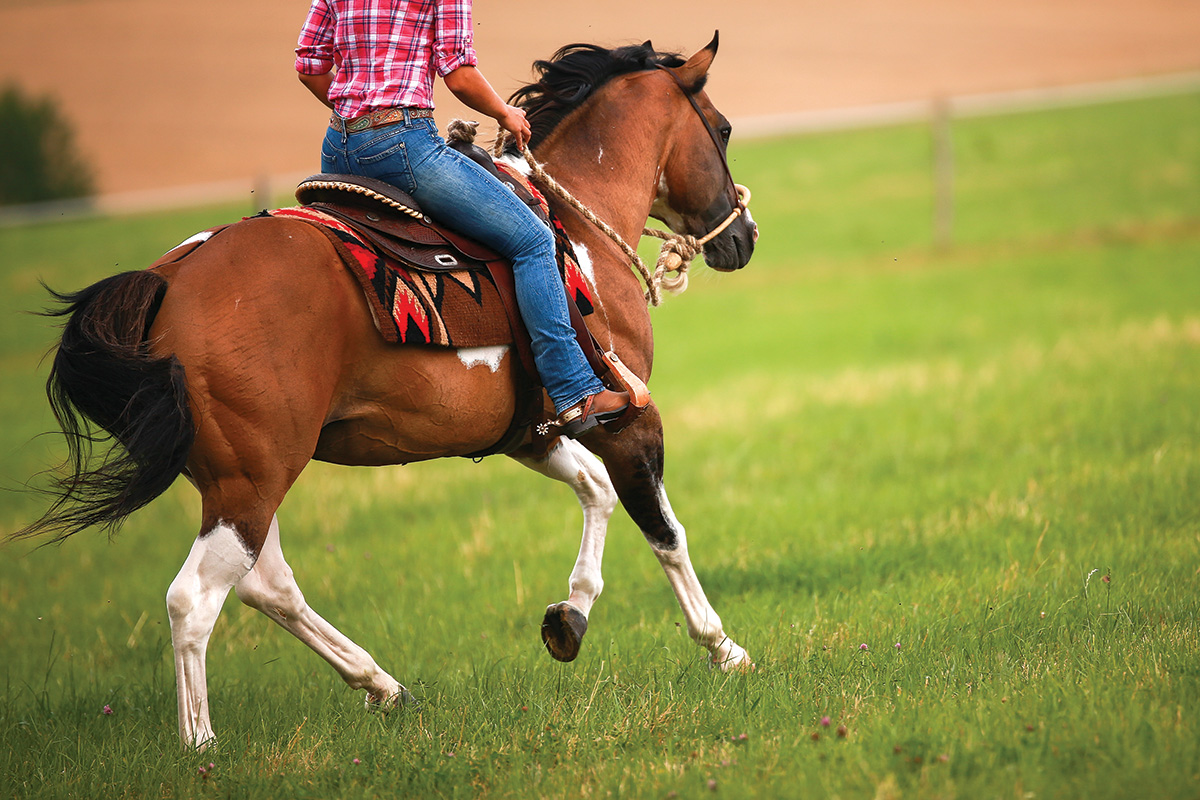
Post-workout leg care can be as hot-button a topic as blanketing among horse owners. Some riders cold hose, wrap, and/or poultice their horse’s legs, while others simply leave their horses alone. But is there a “right” way to care for equine limbs after athletic exertion?
Ins and Outs of Post-Workout Leg Care for the Horse
Lori Bidwell, DVM, Dipl. ACVA, is the co-owner and founder of East-West Equine Sports Medicine, which has locations in Kentucky and California. Bidwell is a certified veterinary acupuncturist, massage therapist and anesthesiologist. She travels from coast to coast with the hunter/jumper circuit and actively competes in the amateur jumpers.
Bidwell is a Fédération Equestre Internationale (FEI) Official Veterinarian, so she is well-versed in caring for elite athletes. She encourages her clients to begin thinking of their horse’s post-workout leg care as soon as their round ends.
“A cool-down until the horse’s respiratory and breathing [rates return to resting levels] are sufficient, but a nice, relaxing walk after strenuous work is best to keep the muscles loose,” she says.
Put it on Ice: Bidwell also recommends icing a competition horse’s legs for 20 minutes.
“If you’re using ice boots, wet the boot and the leg first,” she says. “You can cause freezer burn or have poor contact if you don’t [wet the leg before icing].”
Bidwell notes that the exact method of icing doesn’t matter. Having the horse stand in a bucket with ice works just as well as ice boots (assuming the horse will stand still). Twenty minutes is the standard time to ice if using boots; after that, the ice melts and the boots become too warm to offer the horse any benefit.
That’s a Wrap: Though it’s customary to see show horses standing in bandages in deeply bedded stalls when they’re not being ridden, Bidwell cautions that wrapping is not necessarily a good thing, even if the person applying the wraps does everything correctly.
“High temperatures in wraps—especially in warmer climates or during the summer show season—can actually overheat tendons, specifically the deep digital flexor tendon, because it has limited blood flow,” she says.
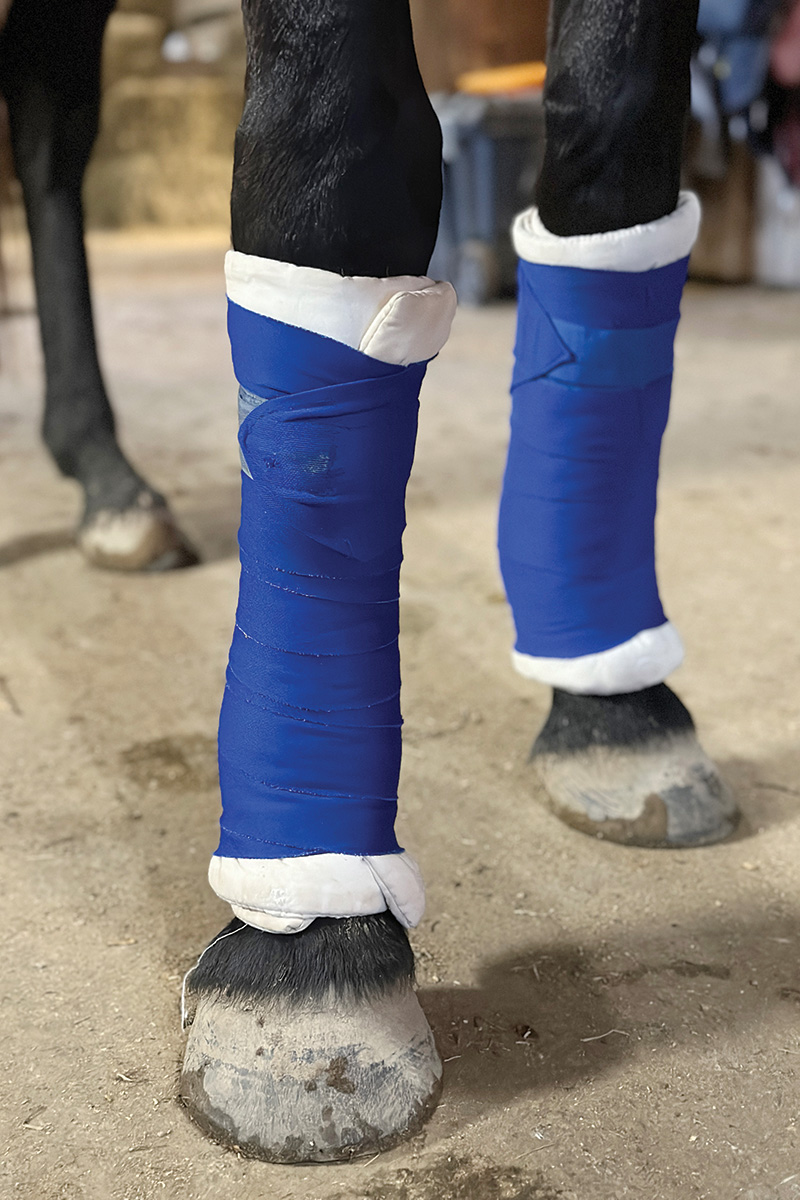
If you have a senior equine that may need the support or one that stocks up easily, wrapping may still not be the answer you’re looking for. Bidwell prefers time outside of a stall over wrapping, particularly when temperatures climb.
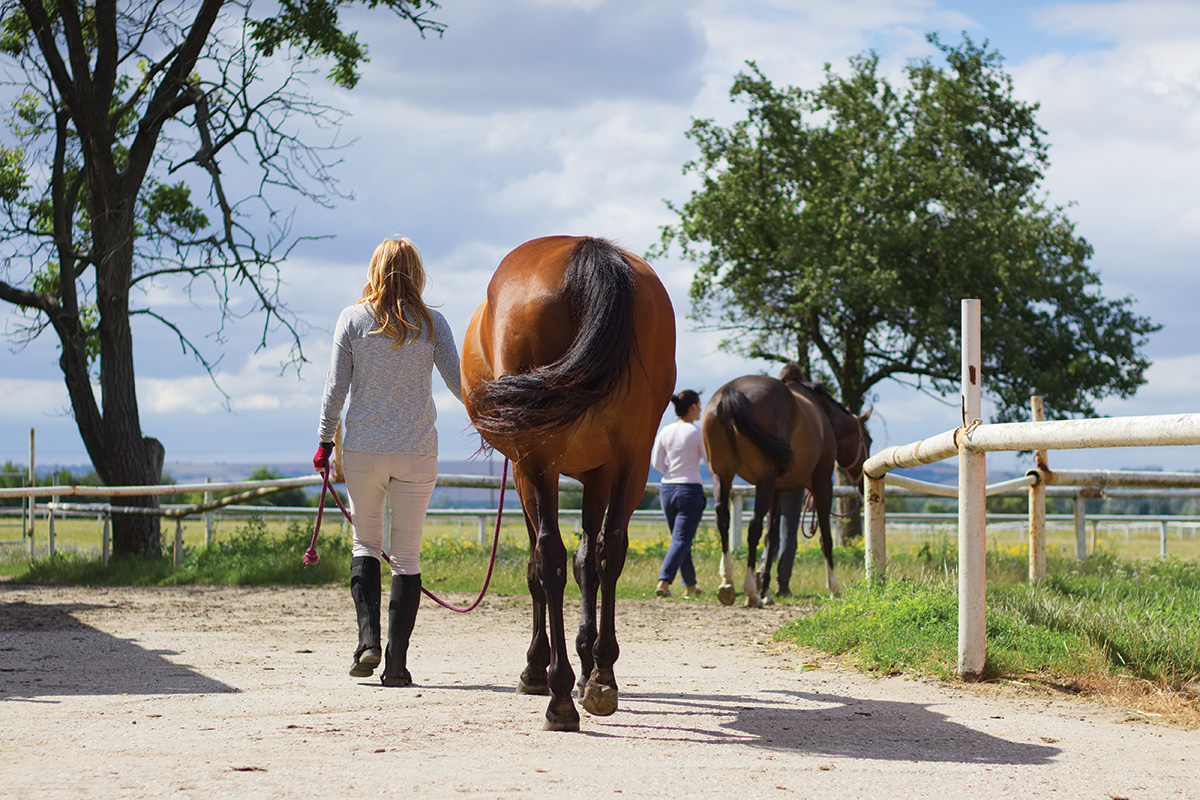
“Getting a horse out for work and frequent walks is ideal,” she says. Still a diehard fan of wrapping? Bidwell offers two additional pieces of advice: Never wrap over liniment, and don’t keep a horse’s legs wrapped for more than eight hours at a stretch.
The jury’s still out on poultice efficacy, but it doesn’t hurt, so if you want to feel like you’re doing something “more” for your steed, slathering his limbs in poultice—but not wrapping over it—could be an option.
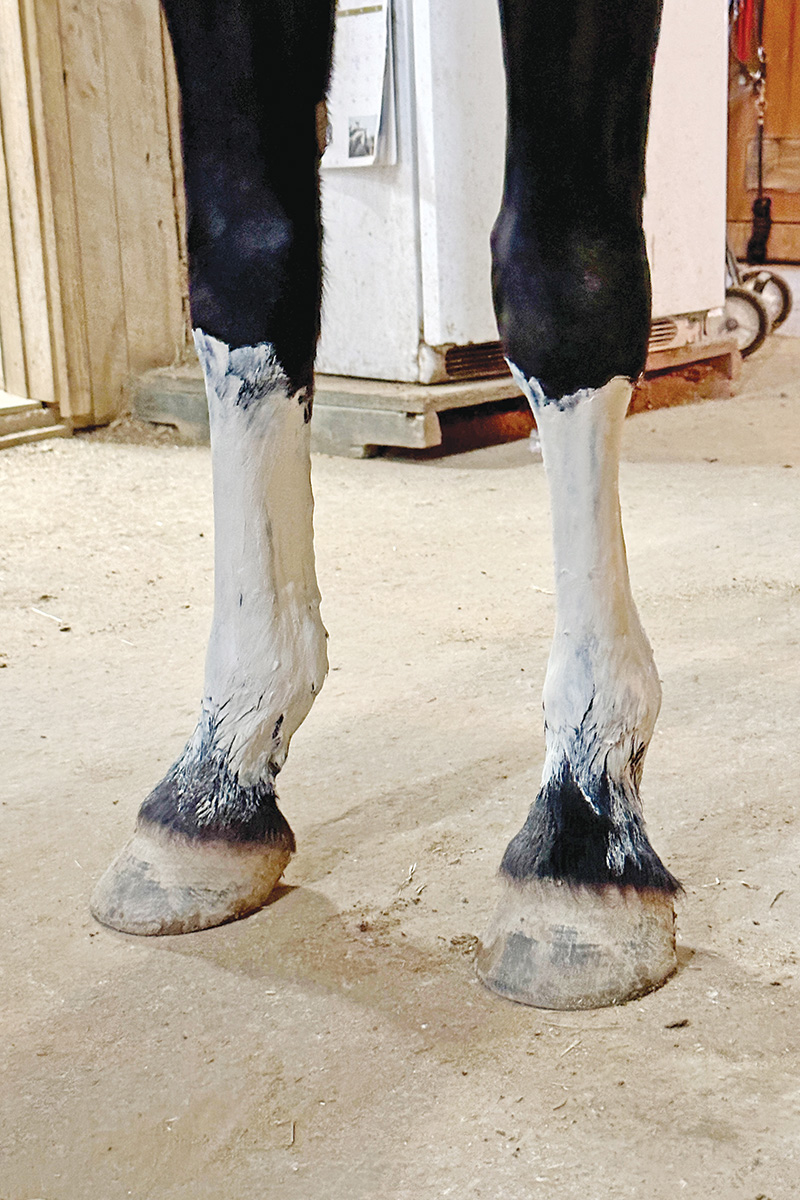
Bedding: An easier way to keep competition horses comfortable is to bed them sufficiently. Deep bedding will help ease potential aches in a horse’s joints, according to Bidwell.
Determining what is adequate takes into account multiple variables, including what material the floor of the stall is made of. Concrete- or asphalt-based stalls will need more bedding to make them comfortable to the horse than dirt floors or matted stalls.
Packing Hooves: For those of you who like to pack your horse’s feet, Bidwell says to skip this potentially messy step.
“Packing feet can actually put more pressure on the soles, depending on what product is used and how it’s applied,” she cautions.
Walking & Stretching: Bidwell encourages her clients to use a simple, common-sense approach to competition leg care, with turnout (when possible) and exercise as the cornerstones for healthy legs following athletic exertion.
“Getting the horse out of his stall a few times a day [is ideal to keep muscles limber],” she says. If time and money permit, massage can also help loosen stiff muscles.
Owners and riders should also get into a routine of doing tail stretches or carrot stretches every time a horse exits the stall, whether that’s to hand-walk or compete.
“Think of horses like you think of yourself,” says Bidwell. “I’m very stiff when I get up in the morning. I need time to move and stretch, and I get very stiff if I am not active.” Horses are the same.
Keep It Simple
Ben Mitchell, DVM, of Southern Equine in Aiken, S.C., grew up riding and competing in western events. He currently owns four Quarter Horses that he trail rides and competes in speed events. Having grown up in the western performance horse industry, Mitchell is well versed in its athletic requirements.
Mitchell, too, is a proponent of the “less is more” mentality when it comes to caring for equine limbs. He recommends riders tack-walk or hand-walk their horses for 15 to 20 minutes after an event to cool them, followed by cold hosing or icing the lower legs and joints for 15 to 20 minutes.
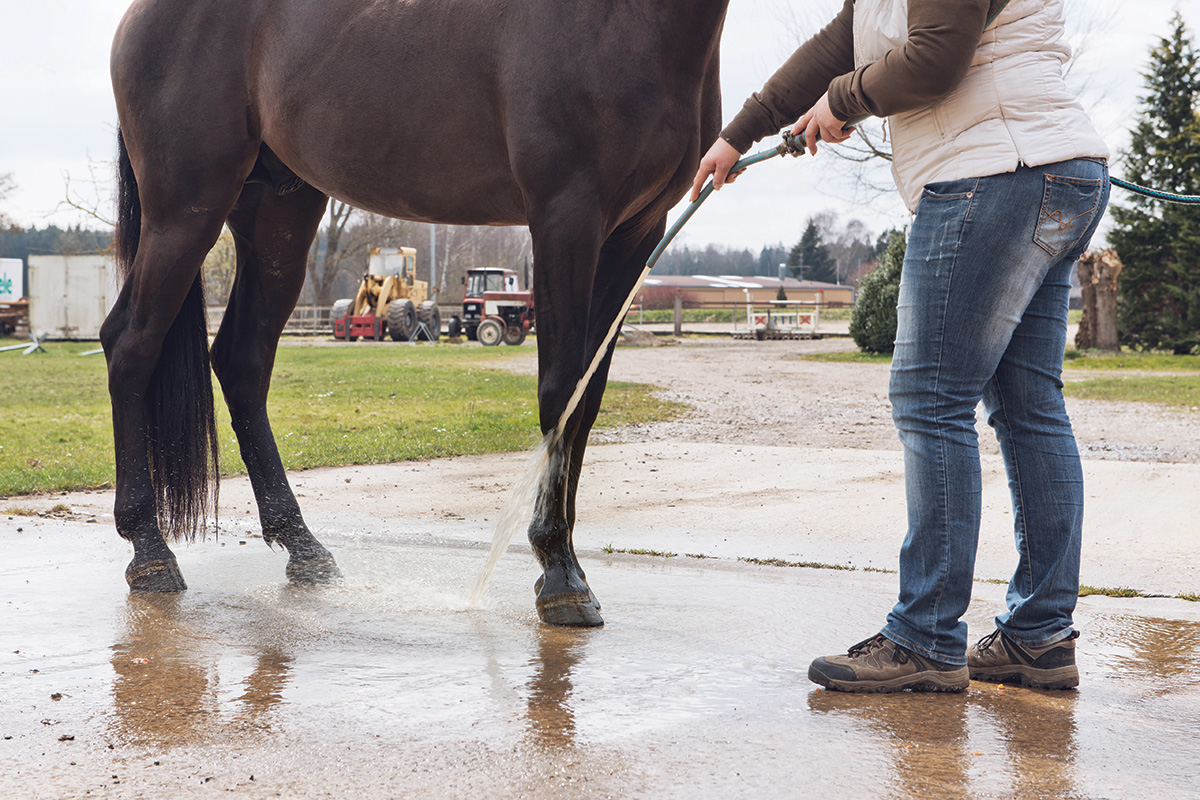
If you can afford the price point, he recommends ice boots.
“Ice boots are helpful in decreasing inflammation to the distal limbs; they’re worth the investment,” says Mitchell.
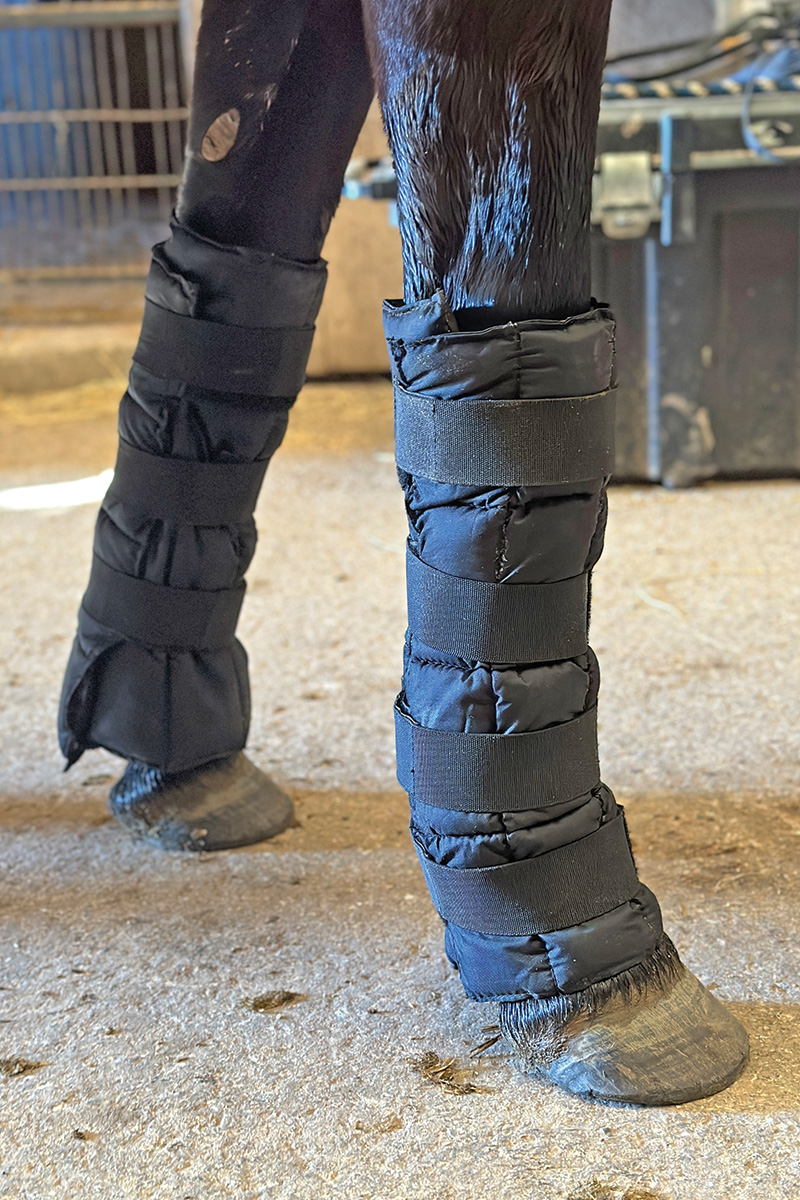
After all the sweat and dirt have been washed from the horse, he recommends applying liniment to the horse’s legs once they begin to dry.
“Liniment is a good [method] for cooling a horses’ distal limbs, but I don’t recommend wrapping over liniment,” he says. Mitchell is also not a fan of wrapping legs except when necessary.
Instead, if you’re showing at a location where the horse is stabled, he recommends bringing (or renting) portable stall mats.
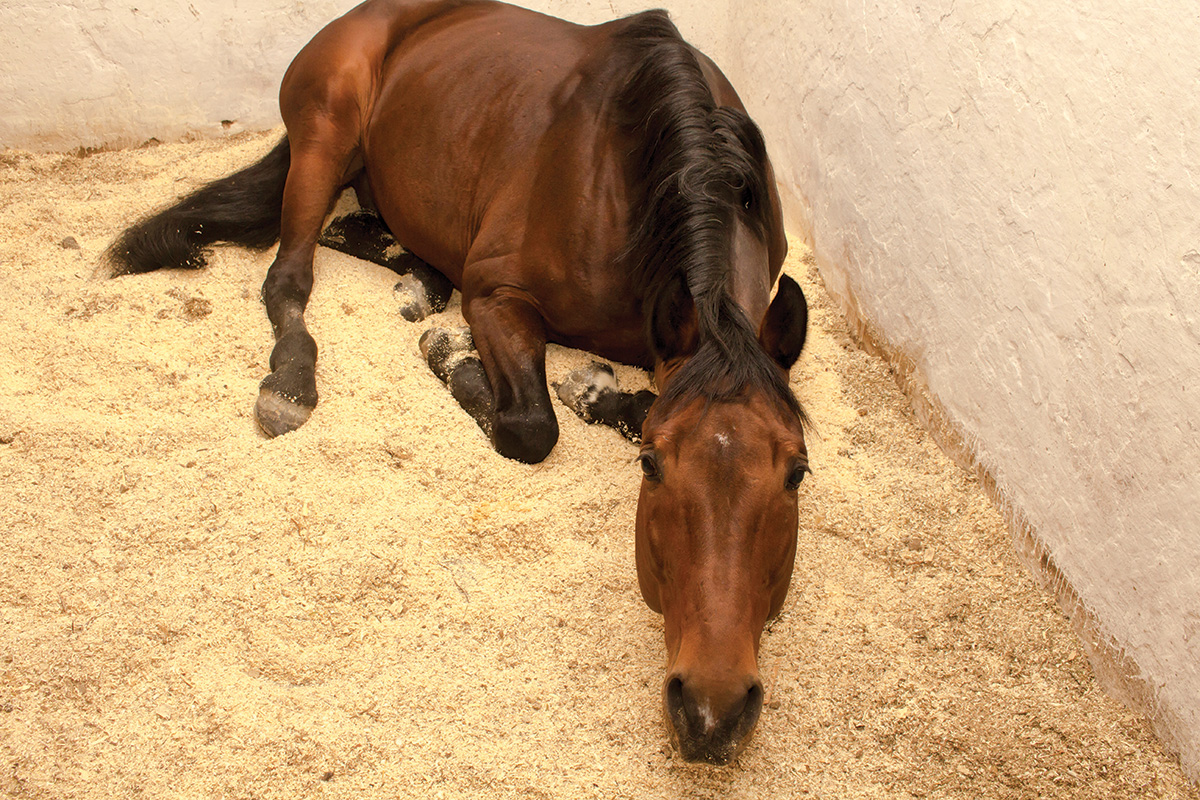
“Portable stall mats are great for supporting distal limbs,” says Mitchell. “I don’t wrap legs unless a horse is prone to swelling.” Even then, this should be done with care. “I prefer horses be taken out of the stall for short walks multiple times a day [over wrapping them],” he emphasizes.
“I typically only recommend wrapping when there’s a history of swelling when the horse is stalled or traveling, or when there is noticeable swelling of a limb,” says Mitchell. He prefers bandages be reset every 10 to 12 hours if the horse must wear them.
Like Bidwell, Mitchell advocates cushioning for equine joints.
“Deeply bedded stalls and portable stall mats are great tools for keeping the horses comfortable,” he says. “Keeping your horse’s stall clean and deeply bedded makes him feel more comfortable to lie down and rest, which makes for a stronger horse the next day.”
If a horse will be spending time in a stall or tied for multiple hours with no shavings or mats, Mitchell recommends owners use Soft Ride boots to support the horse’s feet. Additionally, the use of rubbing alcohol can cool down lower legs and keep them clean when the horse is working on muddy ground.
Though our horsekeeping traditions often encourage us to wrap our horses for hours on end and to apply all sorts of products to their legs, it’s clear that simple is better when it comes to equine leg care. Using ice, providing lots of walks, and a deeply bedded stall without unnecessary leg wraps can all assist in keeping your horse healthy and primed for competition.
This article about post-workout leg care for the horse appeared in the April 2023 issue of Horse Illustrated magazine. Click here to subscribe!






